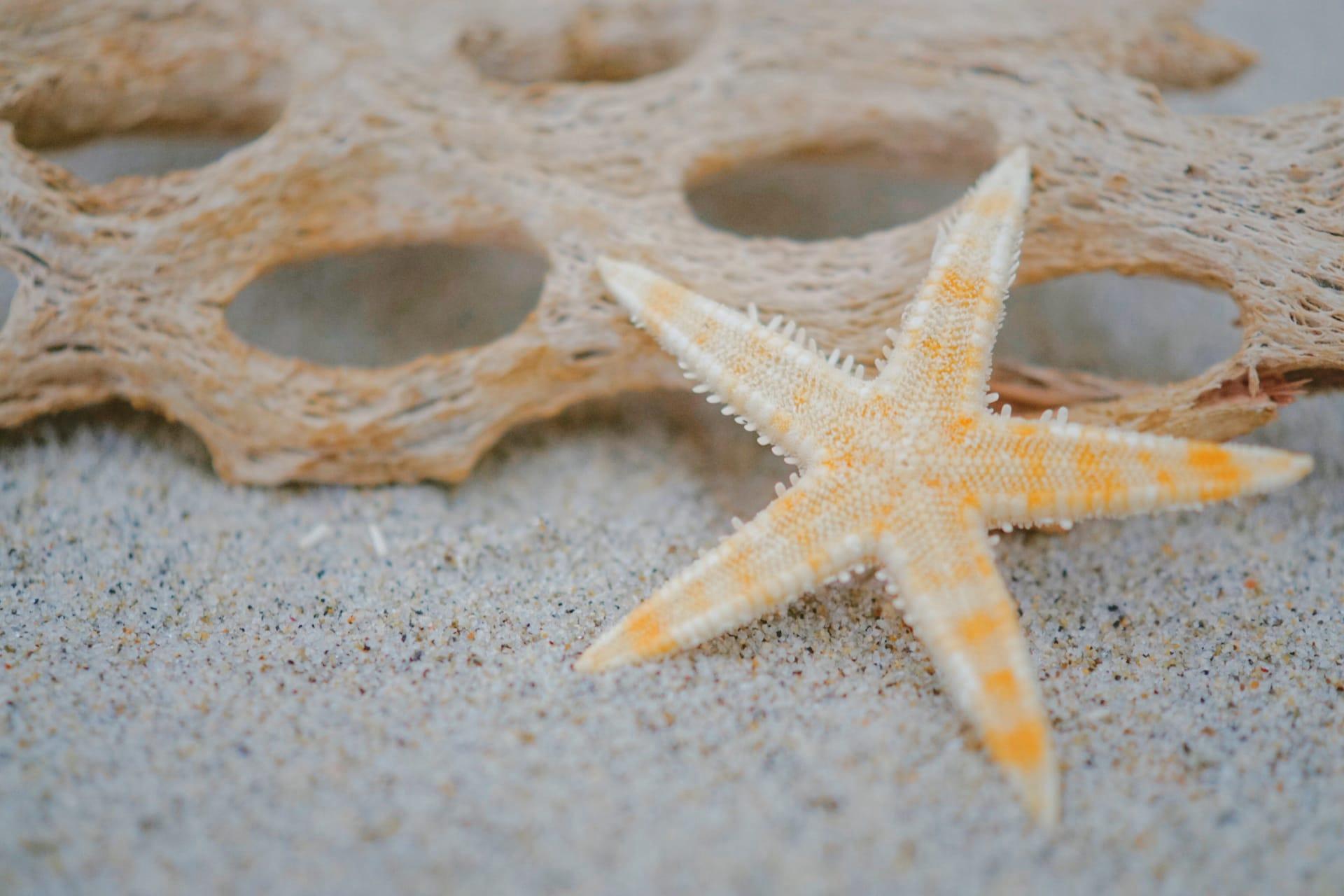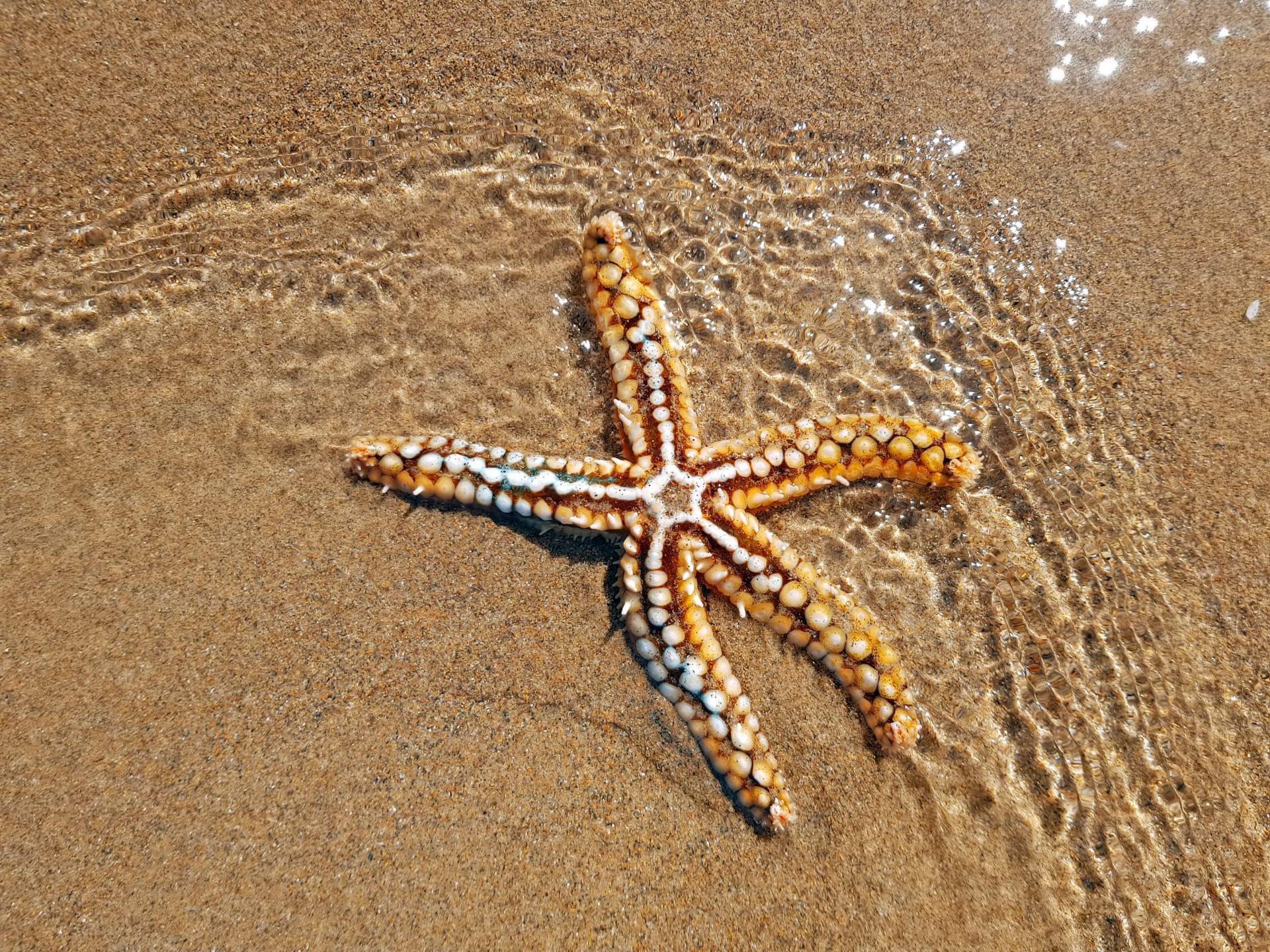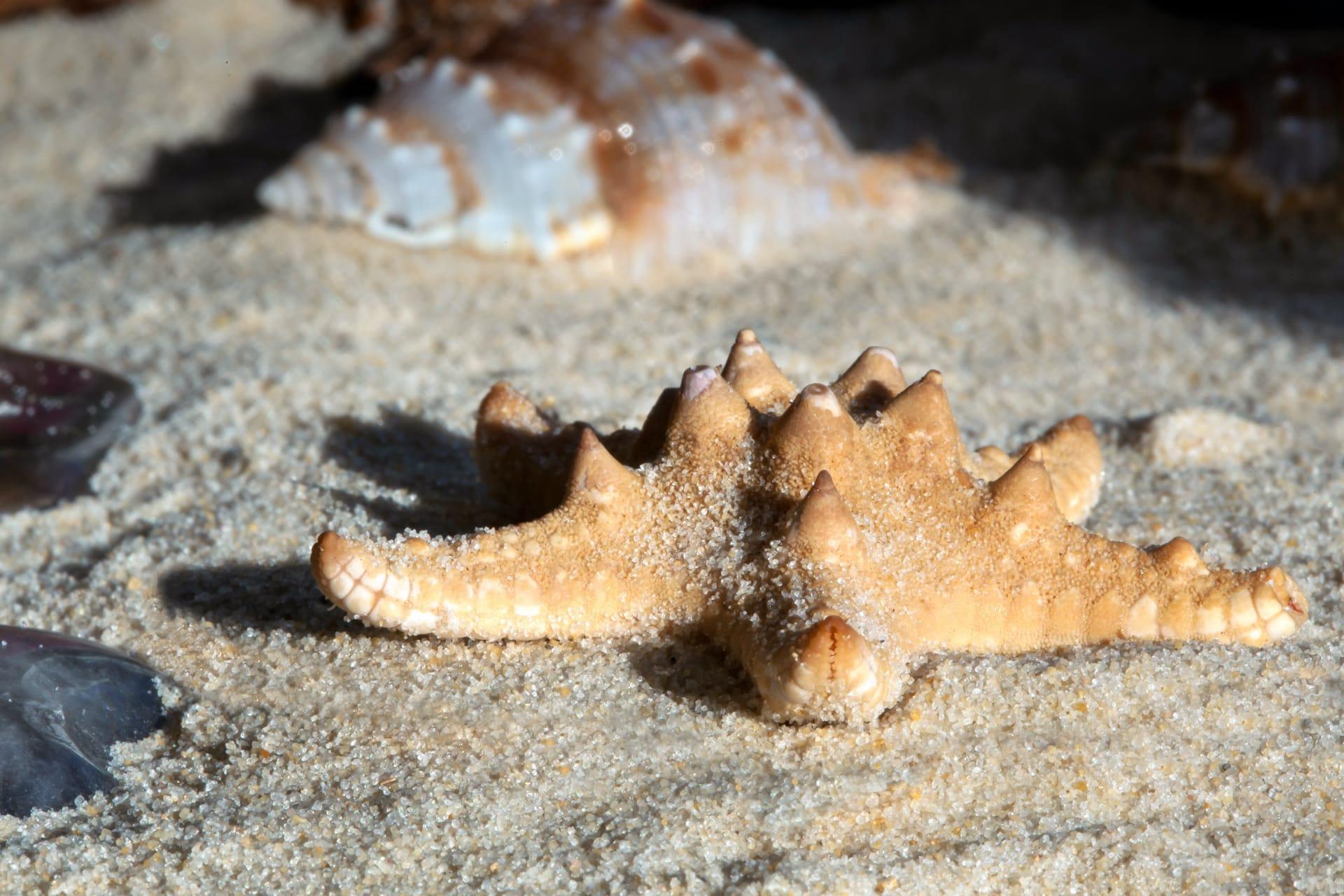Starfish Characteristics
- Home /
- Mini Encyclopedia /
- Animal /
- Starfish Characteristics
1
Starfish, or sea stars, are a fascinating group of marine animals known for their unique star-shaped bodies. These creatures can vary greatly in size, ranging from about 0.4 inches (1 cm) to an impressive 35 inches (90 cm) in diameter. Most starfish typically have a lifespan of up to 35 years, depending on their species and environmental conditions. They are equipped with a tough, calcified skin which protects them from predators and harsh environments.
One of the most remarkable organs of a starfish is its water vascular system, an intricate network of fluid-filled canals used for locomotion, feeding, and gas exchange. This system culminates in numerous tube feet, which are small, flexible appendages that the starfish uses for movement. Each tube foot operates independently, allowing the starfish to move in a coordinated and efficient manner, and to firmly grip onto surfaces or prey.

2
Question: Can starfish regenerate lost limbs?
Answer: Yes, starfish have an amazing ability to regenerate lost limbs. This regeneration process is not only limited to limbs but can include vital organs as well. If a starfish loses an arm, it can fully regenerate it, given time. The time it takes for regeneration depends on the species and the extent of the damage. Some species can even regenerate an entirely new starfish from a single severed limb, provided that part of the central body, or disk, is attached to the limb.

3
Starfish move using their unique water vascular system, which powers hundreds of tiny tube feet. These tube feet function like hydraulic pistons, filling with water to extend and then retracting to pull the starfish along. This method of movement is quite slow; most starfish travel less than 3 inches (7.6 cm) per minute.
When it comes to feeding, starfish have a fascinating approach. Many species are carnivorous and feed primarily on mollusks like clams and oysters. They use their strong tube feet to pry open the shells of their prey. Then, they extend their stomach out of their body and into the shell to digest the prey. This unique feeding method allows starfish to consume larger prey that can't be fit into their small mouths.

4
Starfish are predominantly found in marine environments, from tropical coral reefs to cold seafloor depths. They prefer rocky substrates, where they can find crevices and ledges to cling to. This habitat provides them with abundant food sources and protection from predators.
In terms of reproduction, starfish have diverse strategies. Some species reproduce sexually, releasing eggs and sperm into the water for external fertilization. Others reproduce asexually through a process called fission, where the starfish splits its body into two or more parts, each of which can grow into a complete starfish. Interestingly, some species can also reproduce through parthenogenesis, where females produce offspring without fertilization.

5
Book: "Starfish: Biology and Ecology of the Asteroidea" - Edited by John M. Lawrence, published in the United States in 2013. This comprehensive book provides a detailed overview of the biology, ecology, and taxonomy of starfish. It offers insights into their physiology, behavior, and role in marine ecosystems, making it an essential resource for marine biologists and enthusiasts.
Book: "The Secret Life of Starfish" by Peter David, published in the United Kingdom in 2010. This book offers a fascinating journey into the world of starfish, blending scientific facts with engaging narrative. David explores various species of starfish, their unique abilities like regeneration, and their importance in marine ecology. The book is an excellent read for anyone interested in marine life and the wonders of these star-shaped creatures.